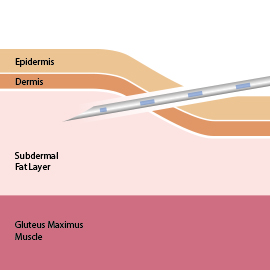Pellets for Hormone Replacement Therapy
 Bioidentical hormone replacement therapy (BHRT) stabilizes hormone levels by delivering optimal dosages of hormones directly into the bloodstream. It is frequently offered as part of an anti-aging therapy program.
Bioidentical hormone replacement therapy (BHRT) stabilizes hormone levels by delivering optimal dosages of hormones directly into the bloodstream. It is frequently offered as part of an anti-aging therapy program.
Hormone therapy is often given orally or intravenously, but pellet therapy is a more attractive option for people who wish to be free from taking daily medications, and who are not keen on the idea of regular injections.
How it Works
About the size of a grain of rice, the hormone therapy pellet will deliver a steady stream of hormones into the blood stream for around three to four months for women and four to six months for men. As the hormones are absorbed into your blood, the pellet is designed to dissolve. This makes the removal of the device unnecessary.
By restoring and stabilizing hormone levels, pellet therapy can help to alleviate many of the symptoms of hormone imbalance that are commonly associated with aging, such as:
- Hot flashes
- Excessive fatigue
- Weight gain
- Night sweats
- Reduced interest in sexual activity
How are Pellets Inserted?
Dr. Kerendian inserts the pellet into the fat layer just underneath the skin near the hip. This is done during a normal office visit and takes about 10 minutes. You are provided with a local anesthetic that will numb the area of insertion prior to the procedure to prevent discomfort. No sutures are necessary, but you may be asked to refrain from physical activity and extended periods underwater—baths, swimming, etc.—for a couple of days.
Who is Pellet Therapy For?
Pellet therapy is ideal for anyone who is struggling with hormone imbalance. Men and women both experience declining hormone levels with age. Yet, there are a big portion of population that have the condition called Hypogonadism (insufficient testosterone production unrelated to age). While frequently recommended during menopause or andropause, pellet therapy can be used at any time of life to address fluctuating hormone levels as needed.
Pellet therapy is often recommended to address:
- Symptoms of menopause and andropause
- PMS
- Menstrual or migraine headaches
- Postpartum depression
- Sleeping disorders
- Birth control induced hormone deficiency


